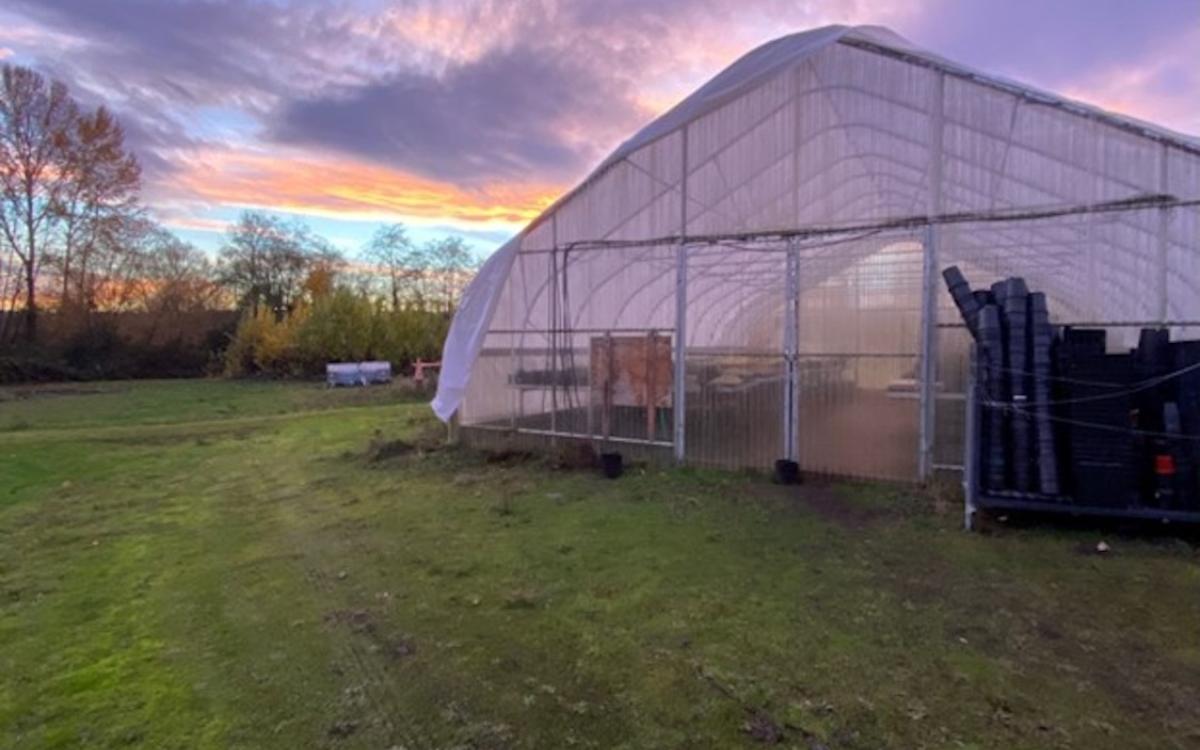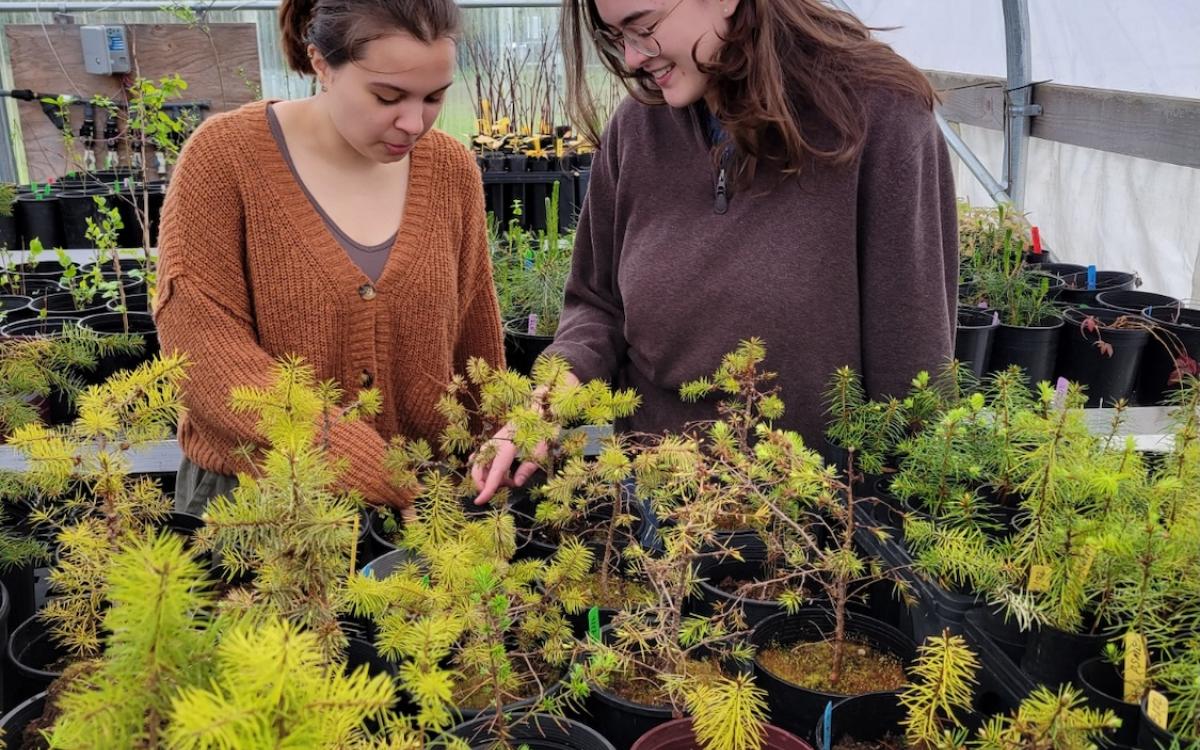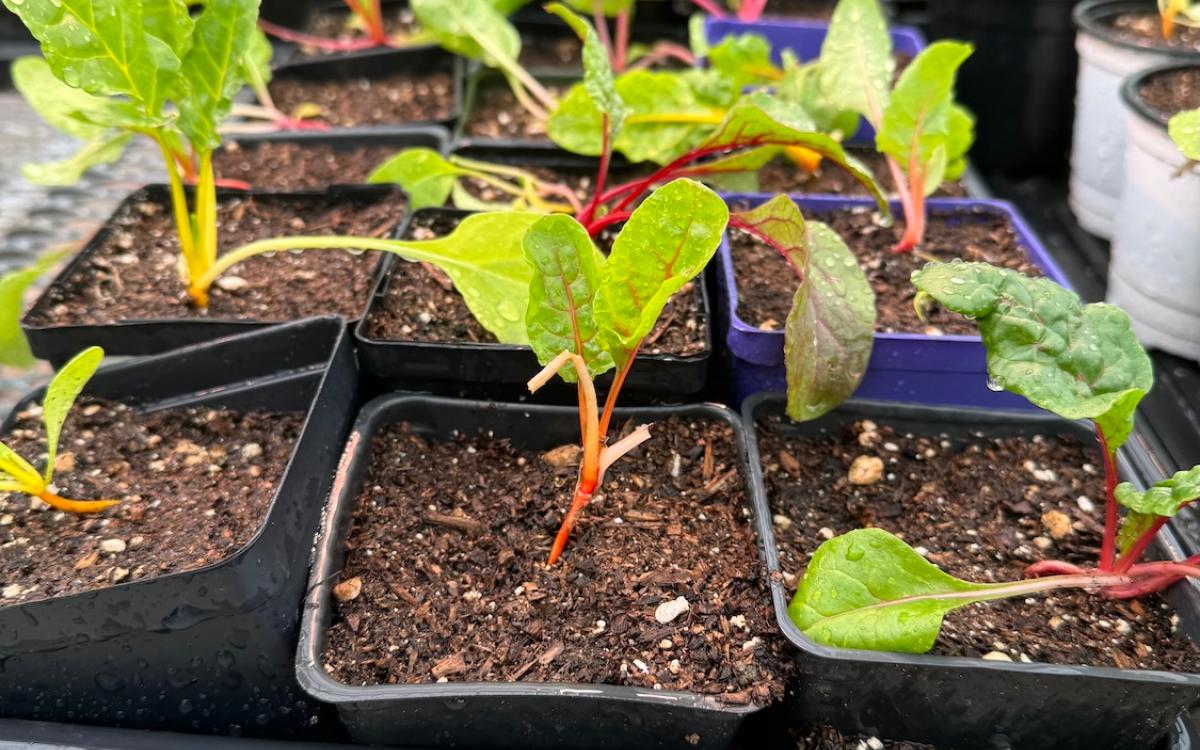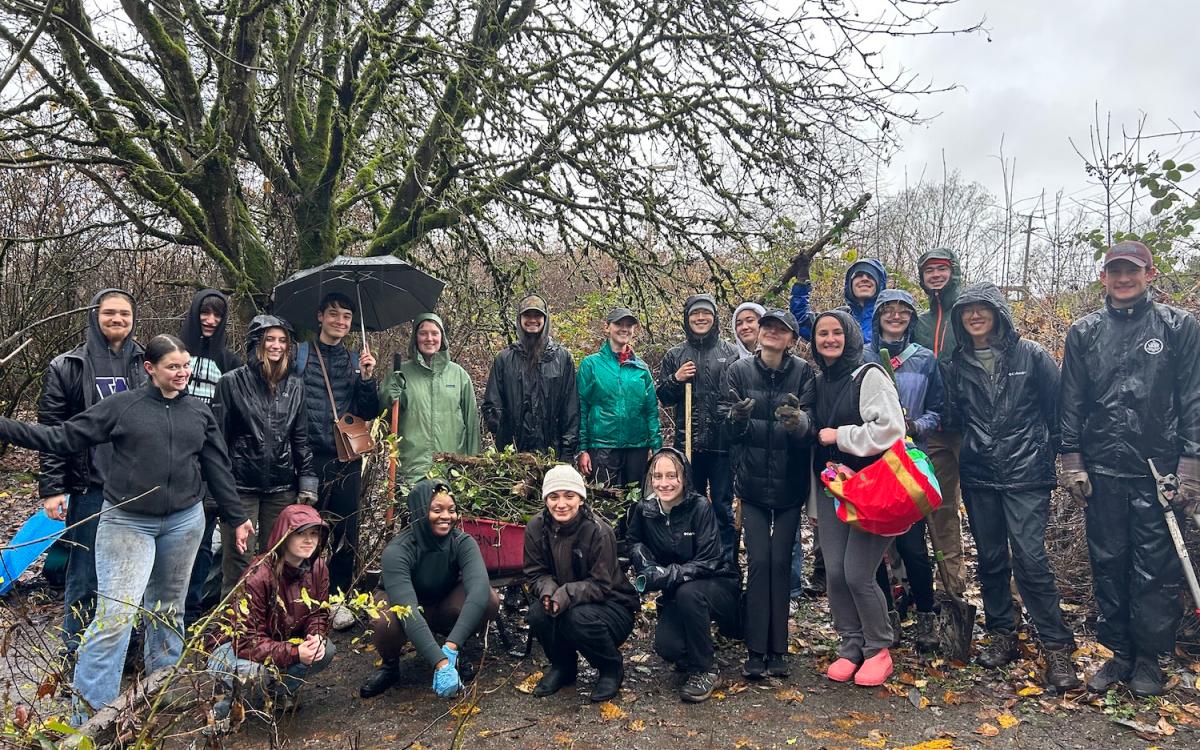At a glance
The SER UW Campus Native Plant Infusion project aims to enhance campus sustainability by planting native species at… Read full summary
- Funding received
- 2023-2024
- Mini
- Awarded
- $5,000
- Funding partners
-
- Services and Activities Fee (SAF)
The SER UW Campus Native Plant Infusion project aims to enhance campus sustainability by planting native species at restoration sites to improve biodiversity, climate resilience, and community engagement. CSF funding will support plant implementation, sourcing ecologically and culturally significant species, and community involvement through stakeholder collaboration, events, signage, and citizen science. This initiative fosters ecological restoration while teaching future practitioners and creating inclusive spaces for humans and wildlife on campus.
The SER UW Campus Native Plant Infusion project is an effort to move restoration sites to a long-term state by planting native plants at high densities to reach the ecological and social goals of each site and for each site manager. Simultaneously, funding will enable a greater capacity for SER to collaborate with other campus groups and spread awareness of the benefits of ecological restoration to campus community members. Therefore, this initiative will improve the sustainability of the UW campus directly by supporting a more biodiverse, climate-resilient landscape and indirectly by teaching restoration skills and concepts to future practitioners with no financial barrier to entry.
The CSF funding will be utilized for two major purposes: implementation of restoration plantings and facilitation of community involvement. The plant implementation phase will require the most financial resources, sourcing plants from the SER UW Nursery and other native plant retailers from across the region to fit the specific needs of each site. These plants will be selected on the basis of both their ecological relevance (e.g., historical presence, pollinator partnerships) as well as their social benefits, specifically as first foods of the Coast Salish Indigenous Nations that historically and presently steward the local landscape. At the same time, SER UW’s monitoring practices will be extended to the new plantings to continue our learning in which species promote the best ecological outcomes.
The community involvement phase will require significant time and creativity of SER members in order to involve diverse campus groups as well as the community at large who pass through each site. The initial push will be to seek input from key stakeholders for management decisions at each site, cultivating [land-based] relationships for many years into the future. Ideas for this phase include hosting harvest events for first foods of campus Indigenous groups and events, creating interpretive signage with guidance from relevant stakeholders, and offering citizen-science opportunities like phone mounts with QR codes so site-goers can submit photos to a shared album that tracks seasonal changes. Each of these will require ample consideration for the needs of other communities and navigating university policies, which we will manage through newly forged relationships with groups across UW. The successful implementation of this project will culminate in a campus full of refuges for both human and non-human community members, where learning and inclusion are centerfold.
Erik Ertsgaard
Project lead
- eertsg@uw.edu
- Affiliation
- Student
- Years
- 1 year(s) remaining at UW
- Affiliated groups
- School of Environmental and Forest Sciences
Brian Darst
Team member
- bhdarst@uw.edu
- Affiliation
- Student
- Years
- 2 year(s) remaining at UW
- Affiliated groups
- Molecular Engineering & Sciences Institute
Natasha Lozano
Project support
- nlozano@uw.edu
- Affiliation and department
- UW Grounds Area Lead
Chris Holmer
Project support
- cholmer@uw.edu
- Affiliation and department
- UW Grounds Gardner Lead
Steve Kryszko
Project support
- skryszko@uw.edu
- Affiliation and department
- UW Grounds Gardner Lead
Request amount and budget
Plans for financial longevity
n/a
Winter 2024:
Draft plant orders for each site based on current nursery availability, consulting UW Grounds and Indigenous groups on species selections
Ideate signage and outreach, starting relationships with potential contributors and learning campus sign-approval governance
Spring 2024:
Install plants on each of the sites
Formulate summer watering and maintenance plans with UW Grounds Area Leads
Consult SER UW Nursery on a contract order with plants grown and procured outside of current nursery availability (to be fulfilled through AY 2024-25), maintaining consultation relationships with UW Grounds and Indigenous groups
Establish research monitoring plots to evaluate each site’s new plantings
Create designs for signage materials and submit for university approval
Autumn 2024:
Install plants available from the nursery
Install signage in designated locations
Winter 2025:
Install plants available from the nursery
Spring 2025:
Install plants available from the nursery
Formulate summer watering and maintenance plans with UW Grounds Area Leads
Plans for long-term project management
After CSF funding ends, the SER UW Campus Native Plant Infusion project will have created spaces that are intentionally low-maintenance, but ample monitoring from both future SER UW leaders and UW Grounds staff members will ensure the sustainability of project outcomes. A large motivation for seeking this funding is to lower future maintenance costs, as native plantings stop the return of invasive species to each site after their student managers graduate. However, working with dynamic living systems does demand careful attention to change. SER UW is fortunate to be in close relationship with UW Grounds, who support us by providing guidance and lending support with site maintenance. Furthermore, over the past four years SER UW has designed and iterated upon methods for monitoring its restoration sites, and is currently collecting data from 12 plots campus-wide. With the help of this funding, this effort will be expanded to represent all new plantings such that changes in vegetation on each site can be quantified. Simultaneously, the function and efficacy of interpretive signage will be supervised by the RSO’s outreach officers. The inclusion of other campus groups will also add stakeholders in the prolonged success of both the ecology and outreach goals of each site.
Problem statement
The University of Washington Seattle campus has long been vitalized by a rich ecosystem of students, animals, and plants learning how to live together in a changing world. The UW Student Chapter of the Society for Ecological Restoration (SER) has been a leader in cultivating this knowledge, practicing ecological restoration on sites across campus for the last 15 years. But over those years two problems have been made clear: (1) restoration outcomes undergo perpetual change and sites must aim for long-term ecological viability and (2) restoration is incomplete without the involvement of a diversity of stakeholders and consideration for the broader community.
SER has been increasingly interested in these problems as many of the club’s sites are near finishing initial invasive species removal, with focus shifting toward planting natives to curb invasive re-establishment and foster biodiversity. Additionally, as more time is shifted away from the heavy lifts of pulling out ivy and blackberry, managers are now seeking opportunities to broaden and deepen the impact of their site on the university community. Funding for native plants and outreach is needed to fulfill managers’ ecological and social goals: to create diverse, water-efficient, and beautiful spaces on campus that welcome the entire community to participate in a more equitable and sustainable future.
Problem context
SER’s efforts in ecologically restoring campus complements the University’s Sustainability Action Plan by lessening our contribution to both local and global biodiversity loss. However, SER’s work also supports many of the SAP targets directly and indirectly. Most directly, our initiative will aid in the cause of doubling sustainability engagement of students, staff, and faculty by welcoming people to work parties where they can learn about restoration practices and principles, regardless of their educational background. Furthermore, this project will spread awareness of the importance of ecological restoration through interpretive signage at our restoration sites. Our monitoring efforts will also contribute to the body of ecological restoration knowledge in the Puget Trough region, supporting Sustainability Target III. Lastly, this project will support Target IV through purchasing plants and other supplies from the student-run SER UW Nursery and other small, local retailers..
SER UW has continued to advance the University’s Diversity Blueprint, particularly Goal 2’s mission to graduate a diverse and excellent student body. Because we offer training and career development in Field Ecology and Restoration with no financial barrier for all UW students, SER has become a hub for hands-on environmental education across a wide diversity of backgrounds. And with this funding, SER can advance its efforts in alignment with Goal 5, developing place-based educational signage that includes information on the Indigenous communities past and present that steward this land.
Measure the impacts
| Impact / goal | Metric(s) of success | UW stakeholders impacted |
|---|---|---|
| Increase the biodiversity of campus | >25 new native plant species installed, >1,000 individual plants installed, >10 new wildlife species observed on sites. | Undergraduate, Graduate, Alumni, Academic staff, Admin staff |
| Train more students in a wider skillset of restoration work | >100 unique volunteers attending work parties (Spring 2024-Spring 2025), >5 different activities/skills offered per site per quarter, 1 or more professional development opportunities (e.g., field trips, guest speakers in the restoration field) offered per | Undergraduate, Graduate |
| Engage more of the community in restoration work beyond the attendance of work parties | permanent signs installed on SER sites with consultation from 2 or more other organizations, creation of unconventional engagement opportunities (e.g., citizen science, seed library) | Undergraduate, Graduate, Alumni, Academic staff, Admin staff |
Communication tactics and tools
The existing communication tactics employed by SER UW to our current membership include frequent posts on social media, a weekly email list, and regular maintenance of our website with a work party schedule. To recruit new members and garner recognition of our work, we also have signs on each site with QR codes that link to our website, posters in campus buildings, quarterly tabling events, and collaboration events with other clubs. During this initiative, new funding will enhance all current strategies and open new doors to outreach efforts. One way we hope to achieve this is by making site signage more interactive by offering site-goers the opportunity to learn about the site’s history and its current happenings. Furthermore, the funding could enable a citizen-science installation where visitors can contribute by taking photos from a fixed location (i.e., a wooden post with a 3D-printed smartphone holder) and submitting them to a collective album, which would later be shared to the wider community. This would be a fun way for people to have a stake in the process of restoration with little time commitment and full appreciation of the beauty held in native landscapes!
Outreach communication plan
The impacts of this project will be felt by all users of the UW Seattle campus through the increased biodiversity and resilience of its natural landscapes. SER sites with established native plants already see more birds, cooler temperatures, and more community-members strolling through between classes. This native plant infusion project will not only elevate spaces on campus to achieve those benefits, but also funds expanding outreach efforts to share the benefits with wider audiences. This would include seeking direct involvement of campus clubs and organizations that could benefit from inclusion in native plantings or visibility in conjunction with our efforts.
Student involvement
One of SER’s core missions is to provide opportunities for students to gain experience in restoration at whichever level of commitment they want. With 3-5 volunteer work party events each week, students can stop by at any time that fits into their schedules, work outside with tools and gloves provided, and learn valuable professional and personal skills like how to install potted plants. In addition to volunteering, students can pursue their passions in restoration by becoming club officers, developing research projects, or starting sites themselves. Having funding for more native plants would enable both volunteers and officers to have richer experiences by diversifying their work beyond invasive plant removal and into more holistic management of restoration sites to make a lasting impact on campus and in their careers in sustainability.



